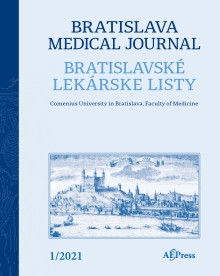Journal info
|
||||
Select Journal
Journals
Bratislava Medical Journal 2024 2023 2022 2021 2020 2019 2018 2017 2016 2015 2014 2013 2012 Ekologia - Ecology Endocrine Regulations General Physiology and Biophysics Neoplasma Acta Virologica Studia Psychologica Cardiology Letters Psychológia a patopsych. dieťaťa Kovove Materialy-Metallic Materials Slovenská hudba 2025Webshop Cart
Your Cart is currently empty.
Info: Your browser does not accept cookies. To put products into your cart and purchase them you need to enable cookies.
Bratislava Medical Journal Vol.125, No.12, p 780–784, 2024 |
||
| Title: Problematic visualization of human protoplasmic astrocytes Immunohistochemical stains | ||
| Author: Ivana SIVAKOVA, Stefan POLAK, Anna PERZELOVA | ||
| Abstract: OBJECTIVE: Traditionally, astrocytes are categorized into fibrous and protoplasmic types based on their morphological appearance. BACKGROUND: For a long time, glial fibrillary acidic protein (GFAP) has been considered the best astroglial marker. However, protoplasmic astrocytes stain negatively for GFAP using immunohistochemical methods. METHODS: Immunohistochemical methods with antibodies to GFAP were used to identify astrocytes. Paraffin sections were prepared from brain biopsy samples of adult patients diagnosed with aneurysm, traumatic contusion, subdural hematoma, gliomas or brain metastases. RESULTS: In all samples, the GFAP-positive fibrous astrocytes were located in the subpial area and in the white matter. Several GFAP-positive protoplasmic astrocytes were found only in one brain sample from a patient with ruptured aneurysm. Conversely, GFAP-positive astrocytes of intermediate shape were rarely observed in the cortical gray matter from patients with tumoral diagnoses. CONCLUSION: Our immunohistochemical study demonstrates that GFAP-positive cells with morphology similar to protoplasmic astrocytes rarely occur in injured brain cortex. We conclude that brain tissue contains GFAP-negative glial precursor cells, which can differentiate into GFAP-positive cells under pathological conditions and sometimes exhibit protoplasmic or intermediate morphology. Similarly, GFAP staining is increased in fibrous astrocytes, typically described as reactive to brain noxa. These results raise many questions about astrocytes identification and classification. In addition, these findings may explain the absence of GFAP-positive cells in adult human brain cultures, often termed “glia-like” cells (Fig. 3, Ref. 18). |
||
| Keywords: protoplasmic astrocytes, fibrous astrocytes, GFAP, human glia, immunohistochemistry | ||
| Year: 2024, Volume: 125, Issue: 12 | Page From: 780, Page To: 784 | |
| doi:10.4149/BLL_2024_119 |
||
|
|
 download file download file |
|

